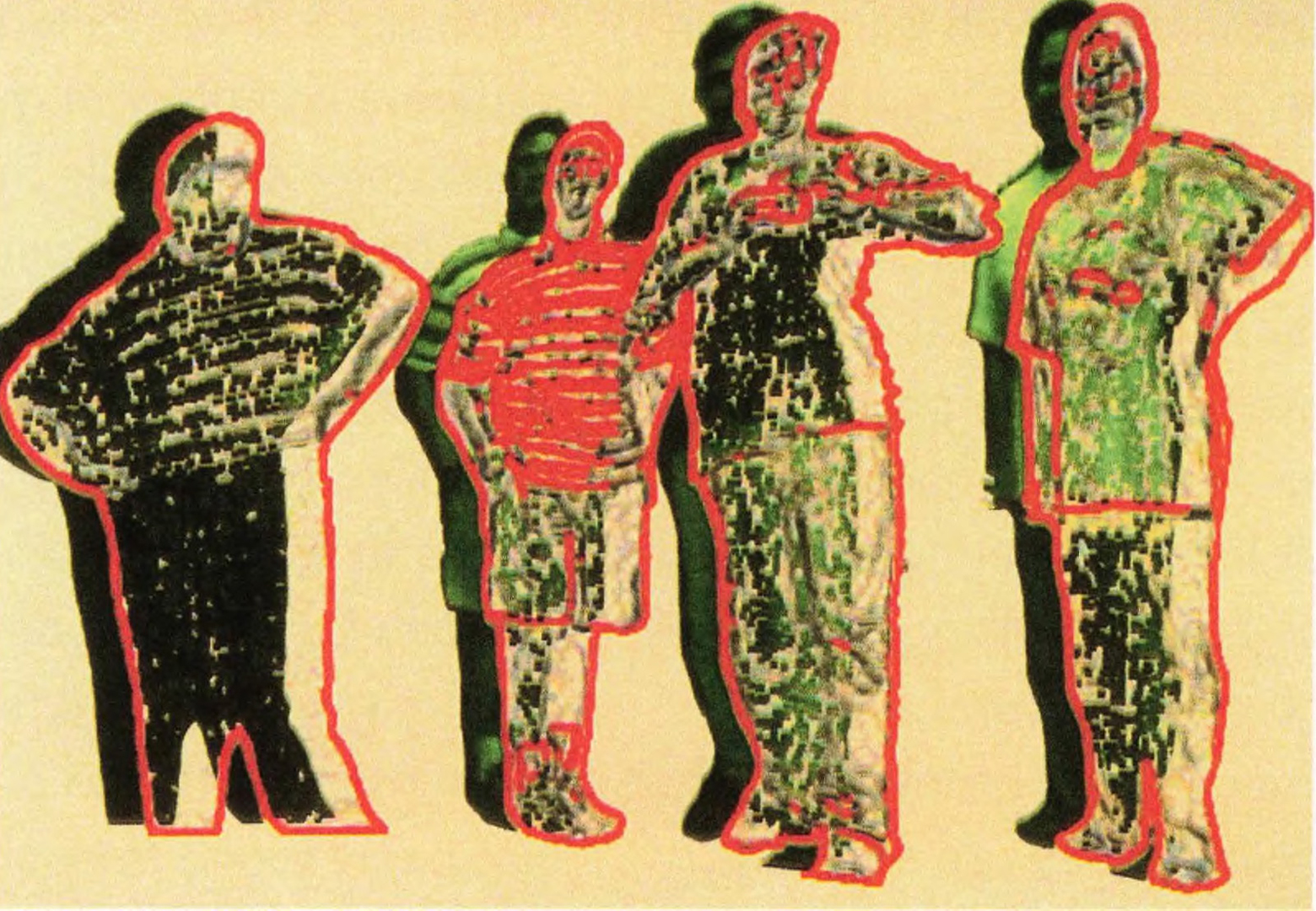“Injection” by White
Conference:
- SIGGRAPH 1995
-
More from SIGGRAPH 1995:


Type(s):
Entry Number: 04
Title:
- Injection
Program Title:
- Interactive Entertainment
Presenter(s):
Description:
In Injection, Tom White focuses on creating intelligent, artificial artists, each with its own identity. This project is a con- tinuation of ideas explored in his collaborations on other interactive environments, such as Small Planet in the SIGGRAPH 93 Tomorrow’s Realities exhibit and Voice Dancer in SIGGRAPH 94’s The Edge.
Injection enables full-bodied interaction between participants and a projection screen controlled by virtual “artists” residing in a Power Macintosh. These artificial artists, which generate a continuous stream of images on the screen, are created using a variety of genetic algorithms, including artificial evolution. Each has its own method of picking which stimulus to respond to and deciding how to embody its perceptions in a two-dimensional snapshot.
The work of the virtual artists has been judged on three criteria: aesthetic interest, continuity between frames and between works, and responsiveness to the participant’s behavior. Based on this evaluation, certain artists were selected and created. Each has its own perception of the world and outward expression of what it experiences.
Background
Computers have been used to create MetaArt, a new area of expression in which the artist produces an intermediary intelligence, which actually produces the work of art. In this way, artists are able to impose values and tastes on a virtual entity at will and produce a piece of work that is once removed from the original creator.
Computers have also been used to create environments in which the meaning resides primarily in the interaction. These interactive works have traditionally engaged the viewer in short experiences that break the traditional boundaries of art by actively involving participants in a series of never-replicating environments. No two experiences are the same.
Injection attempts to merge these two approaches by creating virtual artists that are responsible for observing the behavior of participants and expressing what they see in an ever-flowing abstraction of these perceptions. The perceptions available to the virtual artists include traditional cameras and microphones, as well as perceptual abilities that human artists do not have, including the ability to view the infrared spectrum. The artist observes, expresses, judges, and presents itself to the participants all within a fraction of a second, so that participants feel the continuity between their behavior and the artist’s interpretation of that behavior. The artists usually perform solo, though some may prefer to collaborate with other virtual artists to create a union of different ideas.
The constantly updated expression of each artist is fed to an external projector which is directly in front of the participant. If an artist is particularly happy with an interaction, it may choose to print its work
on an attached poster color printer. There are no pre-defined rules for interaction. The nature of the interaction, including its duration and personal involvement, constantly changes to meet the needs of the participants.
Additional Images:






